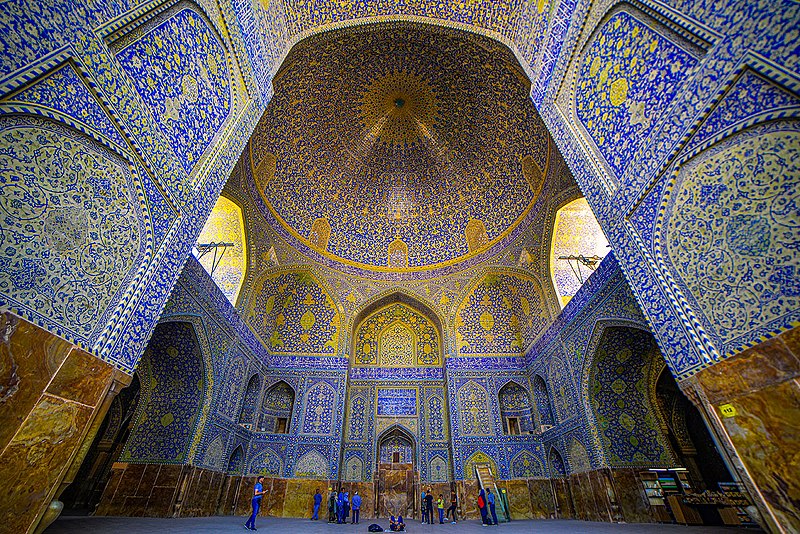The Shah Mosque, also known as Imam Mosque, stands as a crowning jewel of Islamic architecture and a testament to the grandeur and cultural richness of Isfahan, Iran. Commissioned by Shah Abbas I, the mosque was constructed during the Safavid era in the early 17th century and is renowned for its stunning beauty, intricate tile work, and architectural ingenuity, making it one of the most iconic landmarks in Iran and a UNESCO World Heritage Site.
Located on the south side of Naqsh-e Jahan Square, the Shah Mosque dominates the skyline of Isfahan with its majestic dome, minarets, and towering iwans, or vaulted halls. The mosque’s facade is adorned with intricate tile work, calligraphy, and geometric patterns, creating a mesmerizing interplay of colors and textures that captivates the eye and evokes a sense of awe and wonder.
One of the most striking features of the Shah Mosque is its massive dome, which rises to a height of 52 meters and is crowned with a golden finial that gleams in the sunlight. The dome is surrounded by four smaller domes and supported by four massive iwans, each adorned with intricate tile work, muqarnas, and inscriptions from the Quran.
The interior of the Shah Mosque is equally breathtaking, with a central prayer hall adorned with exquisite tile work, intricate stucco decorations, and colorful stained glass windows. The mihrab, or prayer niche, is a masterpiece of Islamic art, featuring intricate floral motifs, geometric patterns, and verses from the Quran that are skillfully incorporated into the design.
One of the most unique features of the Shah Mosque is its acoustics, which are renowned for their exceptional clarity and resonance. The mosque’s design incorporates a series of intricate sound chambers, arches, and domes that amplify the sound of the call to prayer and create a harmonious and immersive auditory experience for worshippers and visitors alike.
In addition to its architectural and artistic significance, the Shah Mosque also holds a special place in the hearts of the people of Isfahan, who regard it as a symbol of their city’s cultural identity and historical legacy. The mosque is a popular destination for visitors and pilgrims alike, who come to marvel at its beauty, offer prayers, and immerse themselves in the spiritual ambiance of this sacred space.
The Shah Mosque is also an important center of religious and cultural life in Isfahan, hosting daily prayers, religious ceremonies, and special events throughout the year. The mosque’s courtyard and halls are often filled with worshippers, tourists, and locals alike, creating a vibrant and bustling atmosphere that reflects the diversity and dynamism of Isfahan’s community.
In conclusion, the Shah Mosque is a true masterpiece of Islamic architecture and a testament to the artistic and cultural achievements of the Safavid dynasty. With its stunning beauty, intricate tile work, and immersive ambiance, the mosque captivates the imagination and inspires awe in all who visit, leaving a lasting impression on the hearts and minds of visitors to Isfahan.



